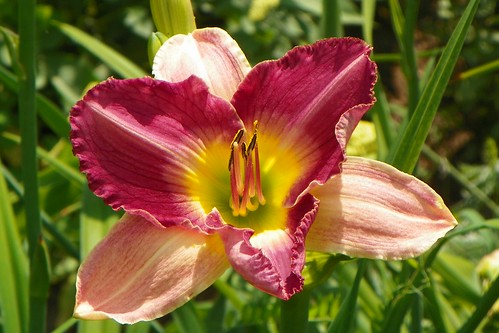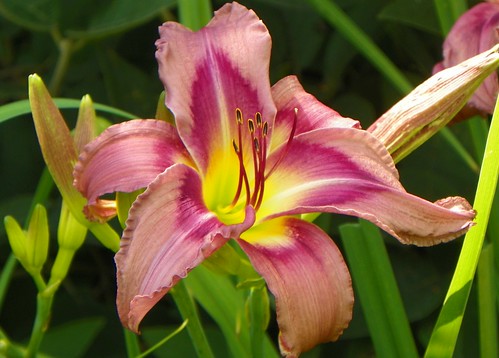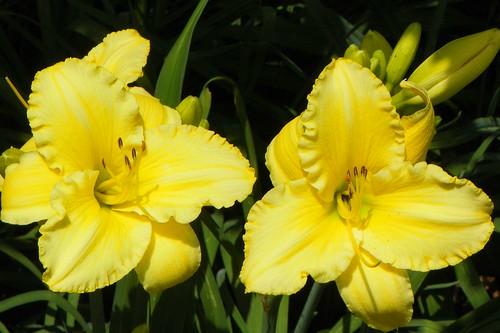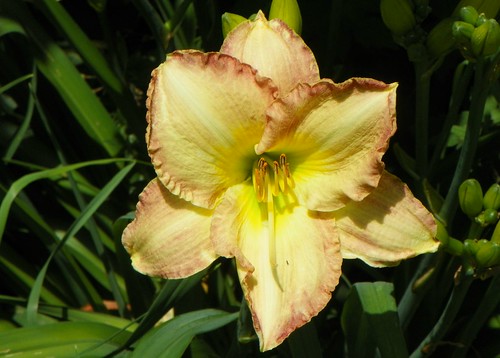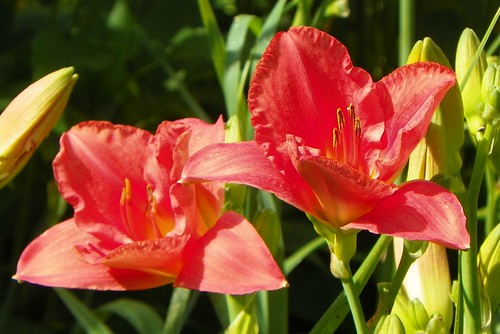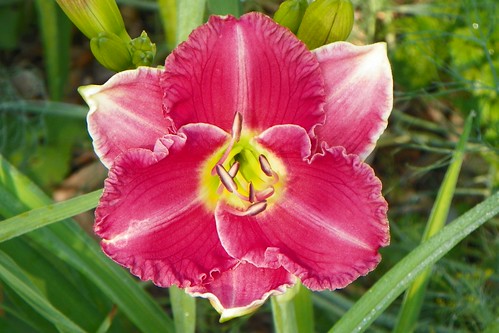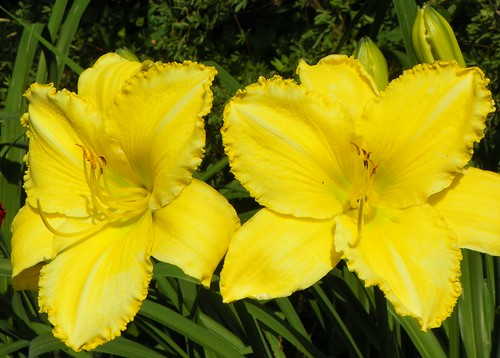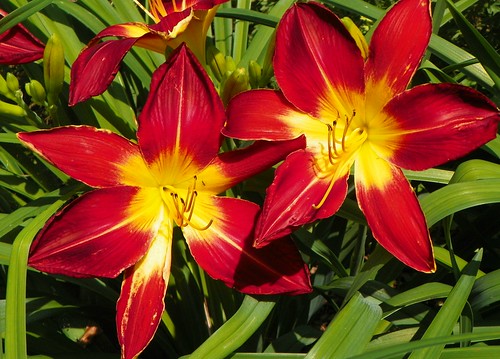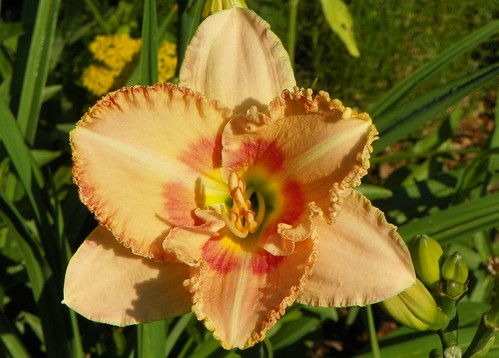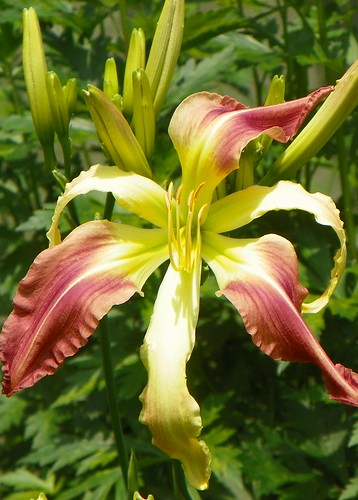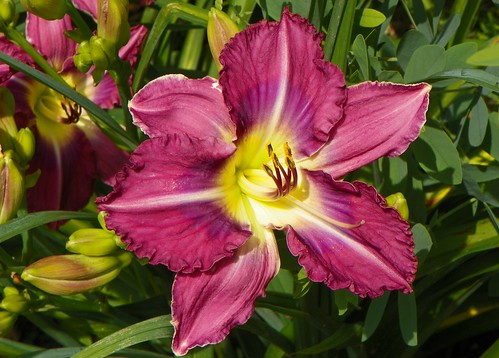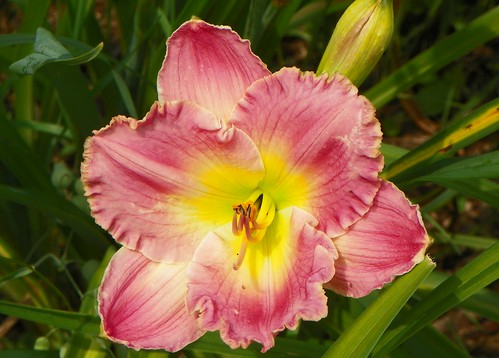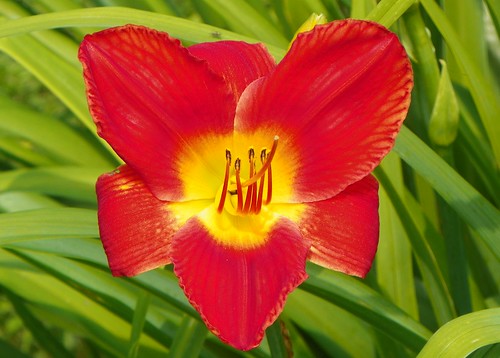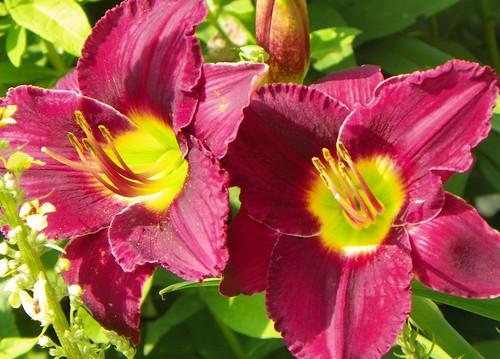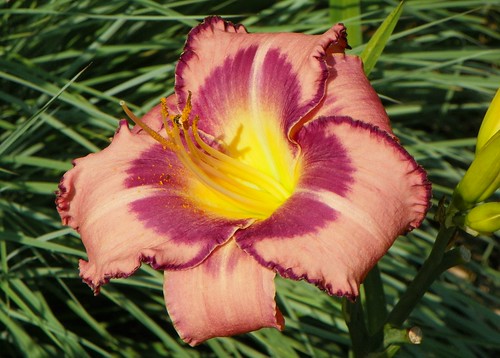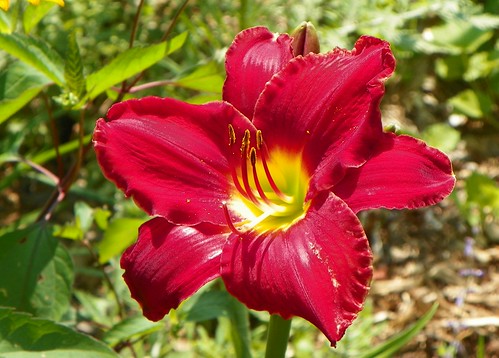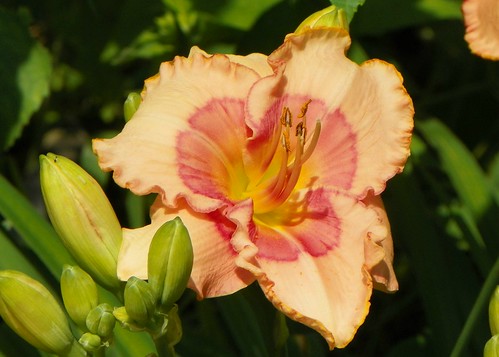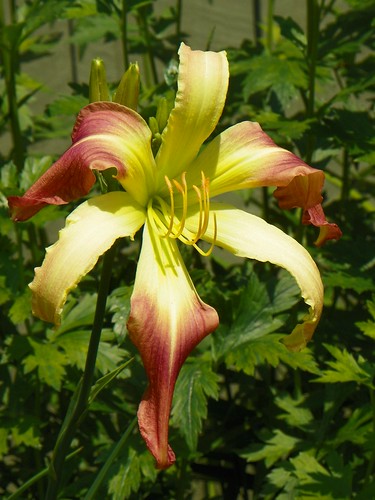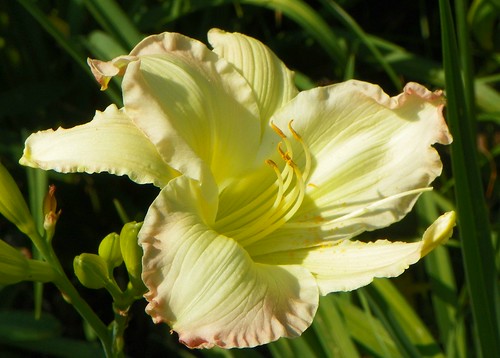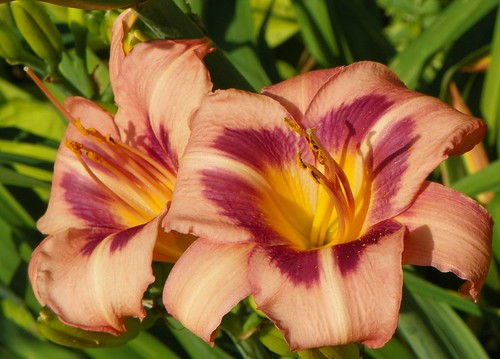
When we moved to Willow House, I left my garden behind. We had lived at our former residence for 30 years, so I had many years to work on the garden there. It featured many perennials, but at its core was a collection of some 200 varieties of daylilies, or hemerocallis. They are so called because each flower blooms for just one day, but the plants produce many blooms so there is a constant display over the daylily season.

Mokan Butterfly and coneflower
Unfortunately, events conspired to make it necessary to leave most of the daylilies behind. I brought about 50 varieties with me to Willow House, which you can see on the daylily page that is tabbed above the Willow House header.

Knockout, with dragonfly visitor
It was my sister who got me started in collecting daylilies. She has a lovely selection in her Oakville garden and gave me my first daylily, Knockout. Knockout is an older variety, introduced in 1971. It is not very tall, about 18 inches, but produces lovely big, pale apricot flower, 6 inches across.

Canary Feathers
Her gift was the beginning of a passion. Each year, I added a few more. There are so many beautiful colours and shapes and patterns to pick from, it is hard to choose.

Gentle Shepherd and Chance Encounter
Like the seed season, the daylily season starts in the winter, when the catalogues arrive. You can purchase the more common daylilies at local nurseries, and may even find a few unusual ones. However, to really indulge yourself, look to daylily growers, who specialize in a large selection.

Tigerling
A few places send out catalogues, but many have online catalogues, where you can browse to your heart’s content. A good place to learn more about daylilies and see cutting-edge plants is at your local daylily club. In Ontario, the regional club is the Ontario Daylily Society (ODS). On their website you will find a listing of Canadian daylily sellers.

From top, Yesterday Memories, Siloam Cinderella, Gypsy Jingle and Little Gypsy Vagabond
Daylilies are shipped with their roots bare, usually in the spring. Plants are usually sold as a double fan of leaves with its attached tuberous root. While the original daylily species could be invasive, modern hybrids form neat clumps.

Angelic Grin
Daylilies are tough, disease and pest resistant plants, and combine beautifully with other perennials such as daisies and liatris.

Birdgirl and friend in the daylily garden
Read Full Post »

